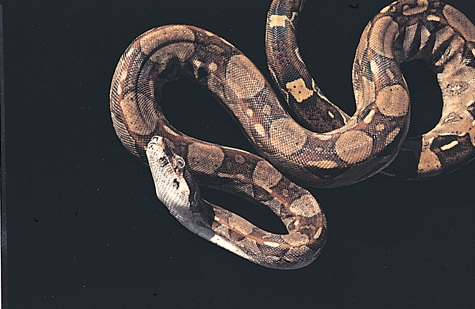Difference between revisions of "Reptiles and Amphibians Q&A 10"
Jump to navigation
Jump to search
Ggaitskell (talk | contribs) |
|||
| Line 11: | Line 11: | ||
|a1= | |a1= | ||
Meningoencephalitis. | Meningoencephalitis. | ||
| − | |l1= | + | |l1=Snake Neurological Diseases |
|q2=How can this physical sign be employed in formulating a tentative diagnosis and prognosis for recovery? | |q2=How can this physical sign be employed in formulating a tentative diagnosis and prognosis for recovery? | ||
|a2= | |a2= | ||
| Line 19: | Line 19: | ||
Although amoebic, bacterial and mycotic pathogens have been found to be responsible for the non-specific clinical sign of stargazing, the aetiologic agents which cause meningoencephalitis in snakes most frequently are viruses, especially paramyxovirus, reovirus and lentivirus, although several others also can induce this serious neurologic sign. | Although amoebic, bacterial and mycotic pathogens have been found to be responsible for the non-specific clinical sign of stargazing, the aetiologic agents which cause meningoencephalitis in snakes most frequently are viruses, especially paramyxovirus, reovirus and lentivirus, although several others also can induce this serious neurologic sign. | ||
| − | |l2= | + | |l2=Snake Neurological Diseases#Prognosis |
</FlashCard> | </FlashCard> | ||
Revision as of 22:34, 27 October 2011
This juvenile boa constrictor is displaying a behaviour known as ‘stargazing’.
| Question | Answer | Article | |
| What is your interpretation of this behaviour? | Meningoencephalitis. |
Link to Article | |
| How can this physical sign be employed in formulating a tentative diagnosis and prognosis for recovery? | ‘Star-gazing’ is a grave sign because nervous tissue, once damaged, does not regenerate. When the cells of the central nervous system are destroyed, they are not replaced; therefore, recovery is unlikely. Although amoebic, bacterial and mycotic pathogens have been found to be responsible for the non-specific clinical sign of stargazing, the aetiologic agents which cause meningoencephalitis in snakes most frequently are viruses, especially paramyxovirus, reovirus and lentivirus, although several others also can induce this serious neurologic sign. |
Link to Article | |
